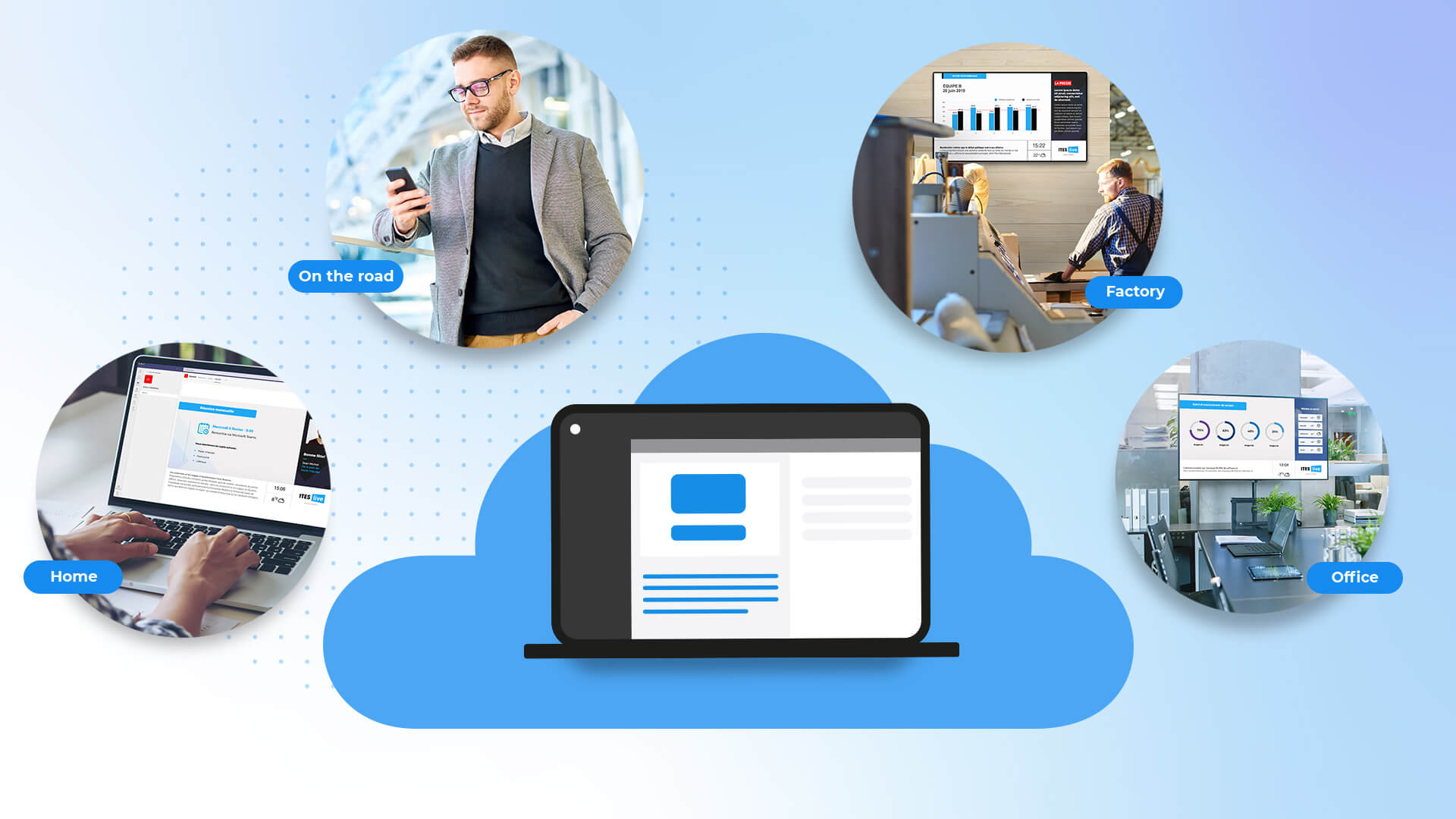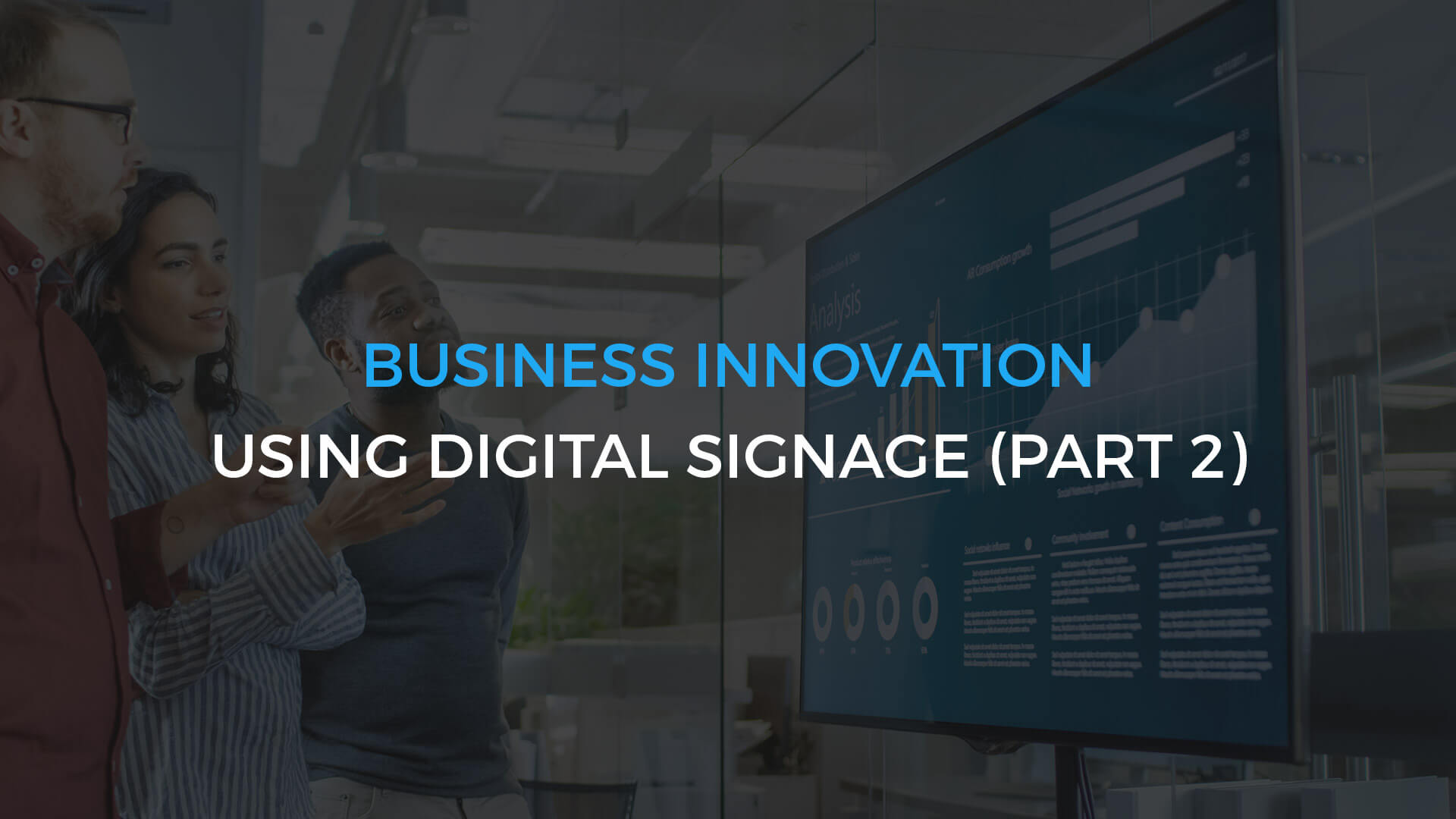Today’s communication platforms are cloud-based, which makes them scalable and flexible, and eliminates boundaries. These platforms are an addition or a complement to the communications ecosystem. Content can be created, managed and distributed from anywhere. An omnichannel solution helps reach employees working under a hybrid model, centralizes communications and makes them available at all times.
1. Reaching employees at work and at home
Some companies have both employees working from home and at the workplace. In this hybrid model, everyone must be able to receive information relevant to them sent by the organization.
Most company employees don’t have access to the same technological assets as others, particularly in the manufacturing sector. Factory workers usually can’t use a computer at their workplace and have no company email address; sharing information on digital displays installed on the premises would help them see company messages. Employees working from home can see content intended for them through Microsoft Teams, the company intranet, their screen saver or a hyperlink. In other words, an omnichannel platform is an efficient way to reach all employees wherever they work and no matter their job type.
2. Centralized management
The bulk of your message creation, management and sharing is made directly from a platform. This means that the entire content is managed from a single hub, independently from the device or the tool on which you wish to share it. Images, photos, videos, Google Slide documents or news can easily be added to your message list, and your employees will see the added content in real time. You can also share content to all of your employees or send messages to a more targeted audience. For example, you could display health and safety reminders (e.g., wearing a safety helmet at all times) only to employees working in the factory. In short, segmenting information is a great way to ensure your messages remain relevant to your employees, and an omnichannel solution greatly facilitates content management for companies.
3. Accessible at all times
Content is shared and available 24/7 for all company employees. They can see the content many times a day, whether it’s on digital displays, screen savers, Microsoft Teams, the company intranet or through a hyperlink. Employees can also watch the content again at their convenience with the tool of their choice. An omnichannel solution ensures all company employees will see your content on many different channels. Also, employees tasked with creating, managing and sharing content through the platform can do so anywhere, and at any time.
Give companies the power to streamline their internal communications and help them reach their employees wherever they work through a wide range of digital channels. You will ensure recipients will always see the information they need to know.






